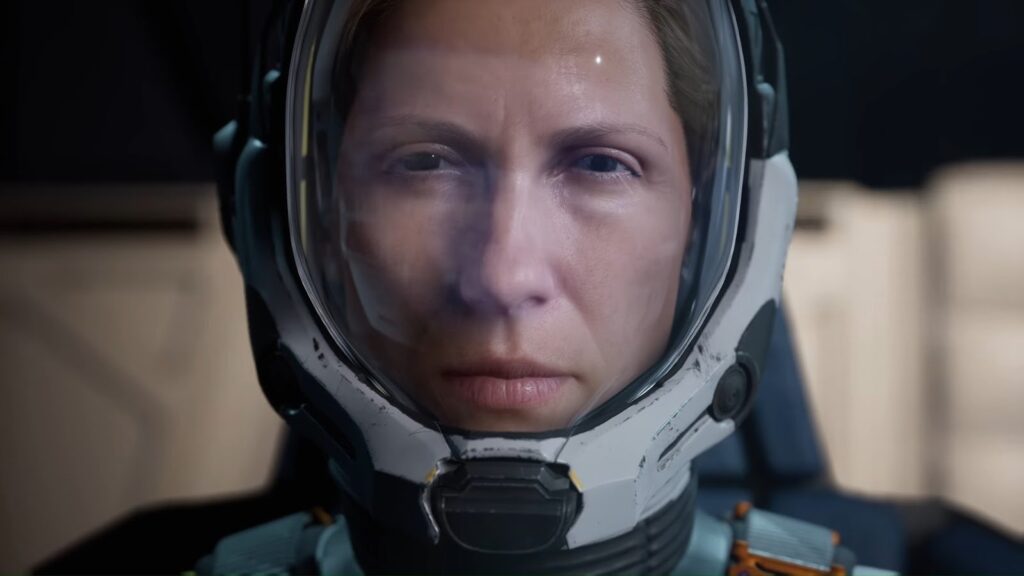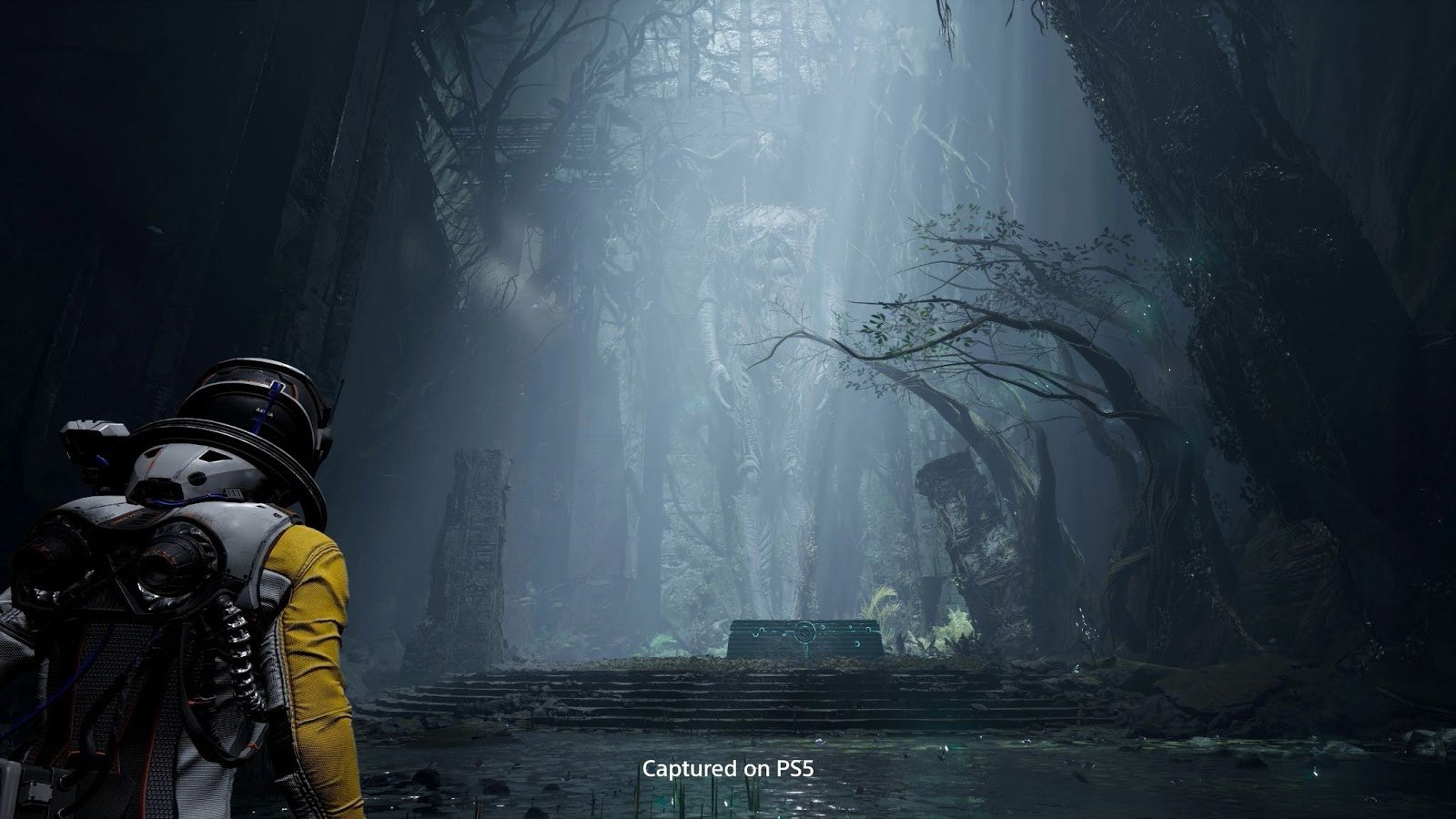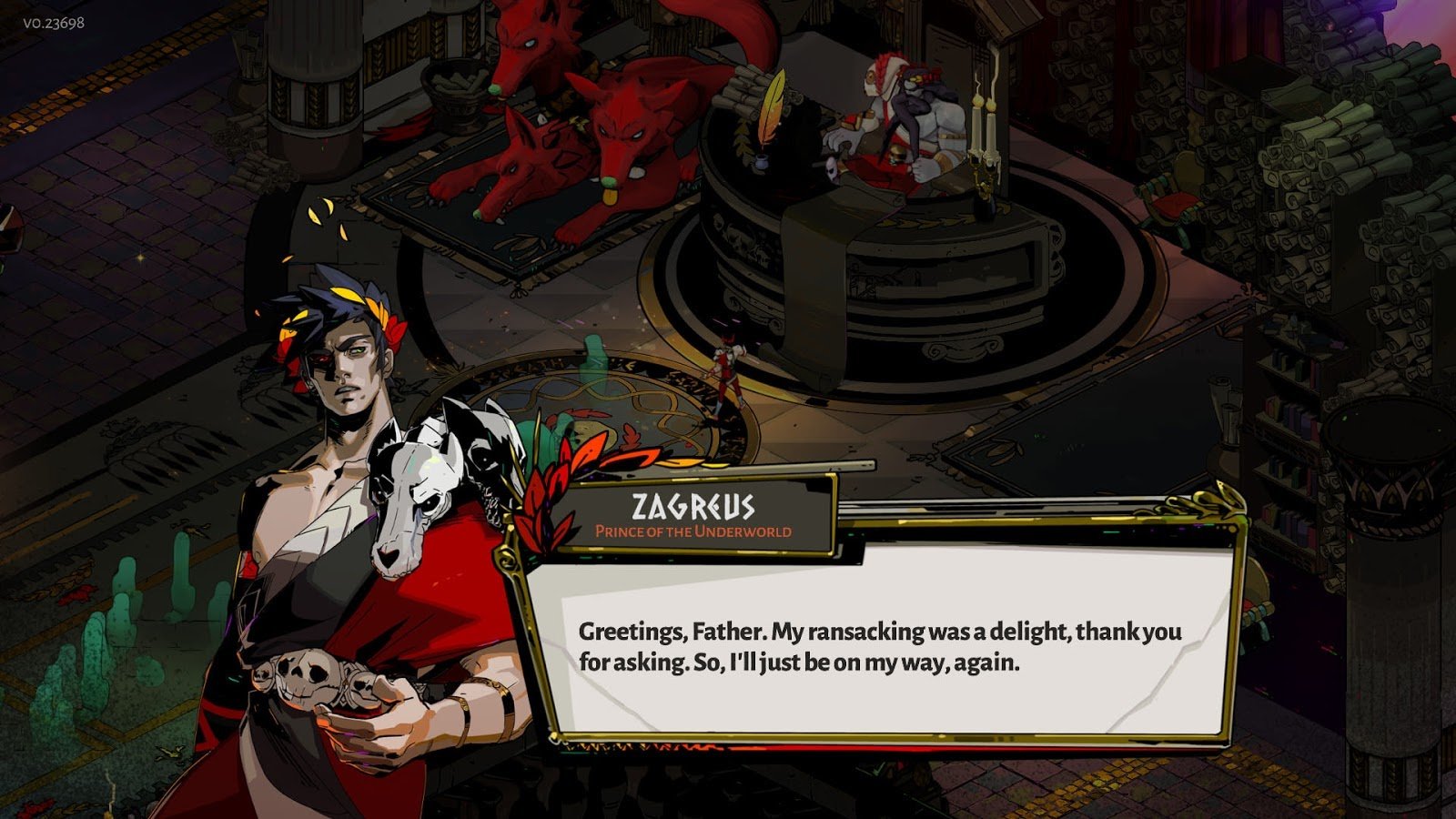
Crash landed, you find yourself trapped in a dark and desolate world. Alone and frustrated, you linger in a devastated environment, holding on to any hope, but all that awaits you are the bodies of your prior selves and the slithering threats ready to kill you at a moment’s notice. Alien tapestries and long lost relics are scattered around as you search for any possibility of escaping the torment. To keep you moving forward, you’ll need engaging items to interact with and a story that will complement the gameplay.
The fascinating sci-fi narrative and gameplay come hand in hand in Returnal, and Eevi Korhonen as the narrative designer helped push Housemarque’s ambition forward into a critically acclaimed product.
When you think of a narrative designer, what do you imagine? Most would assume they feverishly type out scripts for the latest triple-A games, but it’s actually far different in reality. In fact, they’re more of an editor and interpreter between the writer and the game designer. Eevi Korhonen, a Finnish narrative designer who has worked on Control and Returnal , wants to set the record straight.

“A narrative designer is still a job title that is very much [dependent] on which company and which project you’re working on,” Korhonen said. “But my kind of, like, concise version of it would be a person who is the missing link between narrative and game design.”
Like picking out the best gown or suit for your wedding, game developers and publishers choose the narrative designer based on their skills in the industry, background, and writing style. Korhonen was perfect for Control and Returnal, and these games, as she puts it, are “her shit.” She likes “new weird” stories that bend the mind and examine the strangeness of genres like fantasy and sci-fi.
“Control was my dream project,” the Finnish narrative designer said, “Like, it was exactly my kind of shit.”
Narrative designers can often have diverse backgrounds in fields like cinematography, game design, or literature; they each have their own style and development background they can bring to the project.
The narrative designer role is a relatively recent occupation in the gaming industry. As stories and gameplay systems become more complex, it is the job of designers like Korhonen to make sure the story that developers want to tell remains intact. Part of her job is to make sure the text she provides and the gameplay makes logical sense within the context of the narrative. With experience in both writing and game design, she’s fluent in both and can bring them together in a natural fashion.
For example, she made sure in Returnal that the correct text is displayed at the right time, so it matches the UI, gameplay, and context of the narrative. In Quantum Break, the game that messed around with timelines, Korhonen alongside Microsoft’s QA team, made sure the posters, emails, and audio logs you can find in the game all made sense with your decisions and a particular time frame of the narrative. This process occurred during the game’s final stretch of development.
Returnal presented quite the challenge for her and the development team at Housemarque then, as roguelikes are often random by their nature. The gameplay was already in place, and Korhonen had to help establish a narrative around its cyclical nature.
“It’s a very interesting challenge because a lot of the time, we’re used to working in linear formats, we’re used to working in TV and movie script styles, kind of like one thing follows the other,” she said. “And then roguelikes can by their nature disrupt that.”
One challenge that Narrative Director Gregory Louden, Korhonen, and the rest of the team experienced was the specific timing of audio logs within the randomized elements of Returnal. At one point, Korhonen found that two audio logs could be found back-to-back, which created a narrative problem..
“This is not optimal pacing,” she said. “Like, you could listen to the previous audio log while you run into the next.”
Housemarque tried its best to avoid that by manually tinkering with the game to get the perfect balance.
Complicating development further, Returnal’s protagonist Selene was given a voice in 2020 towards the latter part of the project. In fact, she was mute for the majority of the game’s production. Louden made the tough call and ultimately, it was the right move.
“That was a very late production call, but a very good one in the end,” Korhonen said. “But yeah, that was even harder, because now we’re like, okay, what happens if you have a voiceover and you run into combat? What happens if you have a voice over and you run into a cinematic? What happens if you have voiceover and run into an audio log? And what happens if you have a voiceover and you die?”
These are the problems that a narrative designer fixes on a daily basis. While most think she’s a script writer on the project (it was in fact Luke Maulding), her role is actually very different.
Despite these issues during development, Korhonen said narrative-focused roguelikes are worthy of exploring further. “I think it is a very good space to explore, especially because we’re running into that problem that we’re again [into] a new console generation, and the demands on the art, the content, the length, and the visual fidelity are so high.”
Korhonen pointed out developers can now reuse assets and compete with the big 60-100 hour games if the content is compelling enough for the player to keep trying a new run. Part of what makes Returnal so engaging is the thrilling and tight gameplay that’s combined with the challenging enemies and bosses, allowing for hours upon hours of play time.
“I think roguelikes are smart in the sense that you can reuse content if you just make your system smart and refresh the content in a nice and neat way, so it doesn’t become kind of too staid,” Korhonen added.
In a narrative sense, roguelikes can also allow for more engagement with the characters. She brought up Supergiant Games’ Hades, which managed to bridge the gap between game design and story beautifully, thanks in part to its hub system.
“It is interesting to see how we can take maybe a smaller set of characters, and you repeatedly interact with them, you become familiar with them, and you can kind of dig deeper into them,” Korhonen said.
Regarding Hades’ central hub area, she praised how the characters react to your runs in unexpected ways. “I think there’s plenty of things to explore with that structure,” Korhonen said. She’s looking forward to seeing what others do with that format.

Korhonen has worn many hats over the years and she’s learned from the best of the best, including Grand Theft Auto Creative Director Gary Penn at Denki, an entertainment studio in Dundee, Scotland. Korhonen has been a junior product manager, event organizer, market researcher, writer, production assistant, feature designer, and administration before she took on the position of a Narrative Designer.
It was her expansive development knowledge–from the Facebook game Kingsbridge and mobile titles such as Turbo Dismount–that caught the eyes of Remedy Entertainment. The company was trying to expand into mobile games in 2014. Korhonen was offered the role of a mobile game designer and she couldn’t believe she made it to the studio she admired.
“For the first six months, every time I walked into the office, I was like, wow, this is real, this is actually real,” Korhonen said.
Unfortunately, the mobile game initiative that Remedy began was ultimately scrapped because, according to Korhonen, “it wasn’t a combination that really worked.” As a result, she was transitioned to the team behind Control, after a short time working on Quantum Break and CrossfireX as a narrative designer, a new position within Remedy. The rest is history.
There’s a saying in Finland when anyone from the country succeeds on the worldwide stage: “torille!” If a Finnish singer wins the Eurovision Song Contest, “torille!” If Finland wins the Hockey World Championship, “torille!” Translated, it means “to the market square,” a saying that paints a picture of drunk Helsinkians partying in the middle of the night, dancing, streaking, and living their best life. With Finland having a small population of around 5.5 million, having any sort of worldwide recognition is a big deal.
Korhonen said that people didn’t party in the streets over the successes of Returnal and Control, but maybe the public will be dancing over the success of the thriving Finnish game development industry soon if these hits keep coming.
“If we start winning awards, maybe then,” she said.
 GameDaily.biz © 2025 | All Rights Reserved.
GameDaily.biz © 2025 | All Rights Reserved.